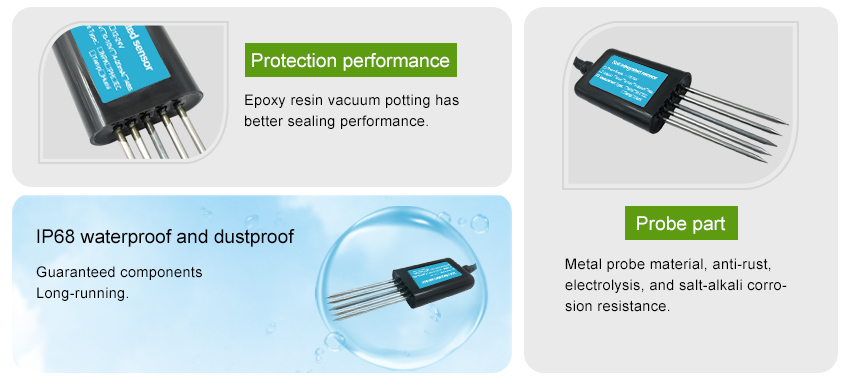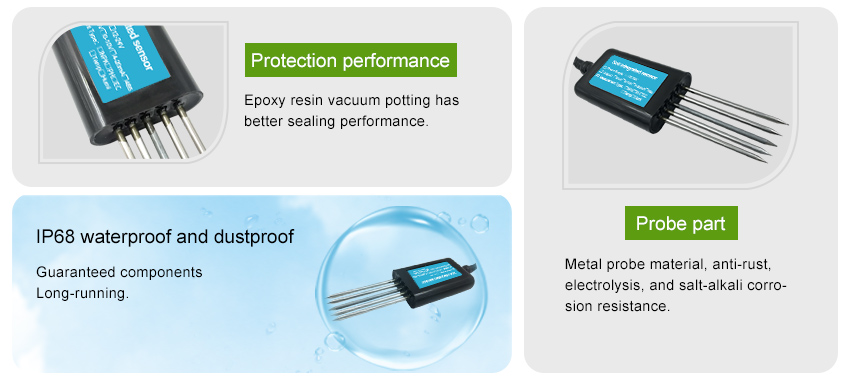Agriculture plays a crucial role in feeding the ever-growing global population. As the demand for food increases, farmers are faced with the challenge of maximizing crop productivity while preserving natural resources and minimizing environmental impact. In recent years, soil sensors have emerged as powerful tools that can revolutionize agriculture practices by providing real-time data on soil conditions. This article explores the potential and benefits of soil sensors in enhancing crop productivity.

Understanding Soil Sensors:
Soil sensors are electronic devices designed to measure various soil parameters such as moisture content, temperature, pH level, and nutrient levels. These sensors are usually placed at different depths in the soil, allowing for accurate monitoring of conditions throughout the root zone. The data collected by soil sensors provides valuable insights into the health and fertility of the soil, enabling farmers to make informed decisions about irrigation, fertilization, and crop management practices.
Real-time Monitoring of Soil Moisture:
One of the most critical factors affecting crop growth is soil moisture. Soil sensors equipped with moisture probes can measure the water content in the soil at different depths. This real-time monitoring allows farmers to optimize irrigation practices by providing precise information about when and how much water to apply. By avoiding under or over-irrigation, farmers can ensure that crops have access to optimal moisture levels, reducing water usage and improving crop productivity.
Precision Nutrient Management:
Nutrient deficiencies or imbalances in the soil can hinder crop growth and reduce yields. Soil sensors provide accurate measurements of nutrients such as nitrogen, phosphorus, and potassium in the soil. This information enables farmers to implement precision nutrient management strategies, applying fertilizers only where and when they are needed. By avoiding excessive fertilization, which can lead to nutrient runoff and environmental pollution, farmers can maximize nutrient uptake by crops and minimize costs.
Optimizing Soil pH and Temperature:
Soil pH and temperature are critical factors that directly impact crop growth and nutrient availability. Soil sensors equipped with pH and temperature probes allow farmers to monitor these parameters continuously. By maintaining optimal pH levels, farmers can create an ideal environment for nutrient absorption and microbial activity in the soil. Furthermore, monitoring soil temperature helps farmers make informed decisions regarding planting times and crop selection, maximizing crop productivity.

Integrated Pest Management:
Soil sensors can also contribute to integrated pest management (IPM) strategies. Some sensors are capable of detecting soilborne pests and diseases, enabling early detection and timely intervention. By identifying potential threats, farmers can implement targeted pest control measures, reducing the need for broad-spectrum pesticides and minimizing environmental impact. This approach promotes sustainable agriculture practices while ensuring crop health and productivity.
Data-driven Decision Making:
The data collected by soil sensors provides farmers with valuable insights for data-driven decision making. By analyzing historical sensor data, farmers can identify trends and patterns in soil conditions, allowing for more accurate forecasting of crop needs. This information helps optimize resource allocation, improve crop rotation strategies, and enhance overall farm management practices. Additionally, the integration of soil sensor data with other agricultural technologies, such as satellite imagery or weather forecasts, can further enhance decision-making capabilities.
Enhancing Sustainability and Environmental Stewardship:
By optimizing irrigation, fertilization, and pest management practices, soil sensors contribute to sustainable and environmentally friendly agricultural systems. Precision farming techniques made possible by soil sensors help reduce water consumption, minimize fertilizer runoff, and decrease reliance on pesticides. This not only improves crop productivity but also minimizes the ecological footprint of agriculture, preserving natural resources and promoting long-term environmental stewardship.
Conclusion:
Unearthing the power of soil sensors is revolutionizing agriculture by enhancing crop productivity, improving resource efficiency, and promoting sustainable practices. Real-time monitoring of soil conditions allows farmers to make informed decisions about irrigation, fertilization, and pest management, leading to optimized crop growth. By embracing the potential of soil sensors, farmers can achieve higher yields, minimize environmental impact, and contribute to global food security. As technology advances, soil sensors will continue to play a vital role in shaping the future of agriculture, ensuring a sustainable and prosperous farming industry.







